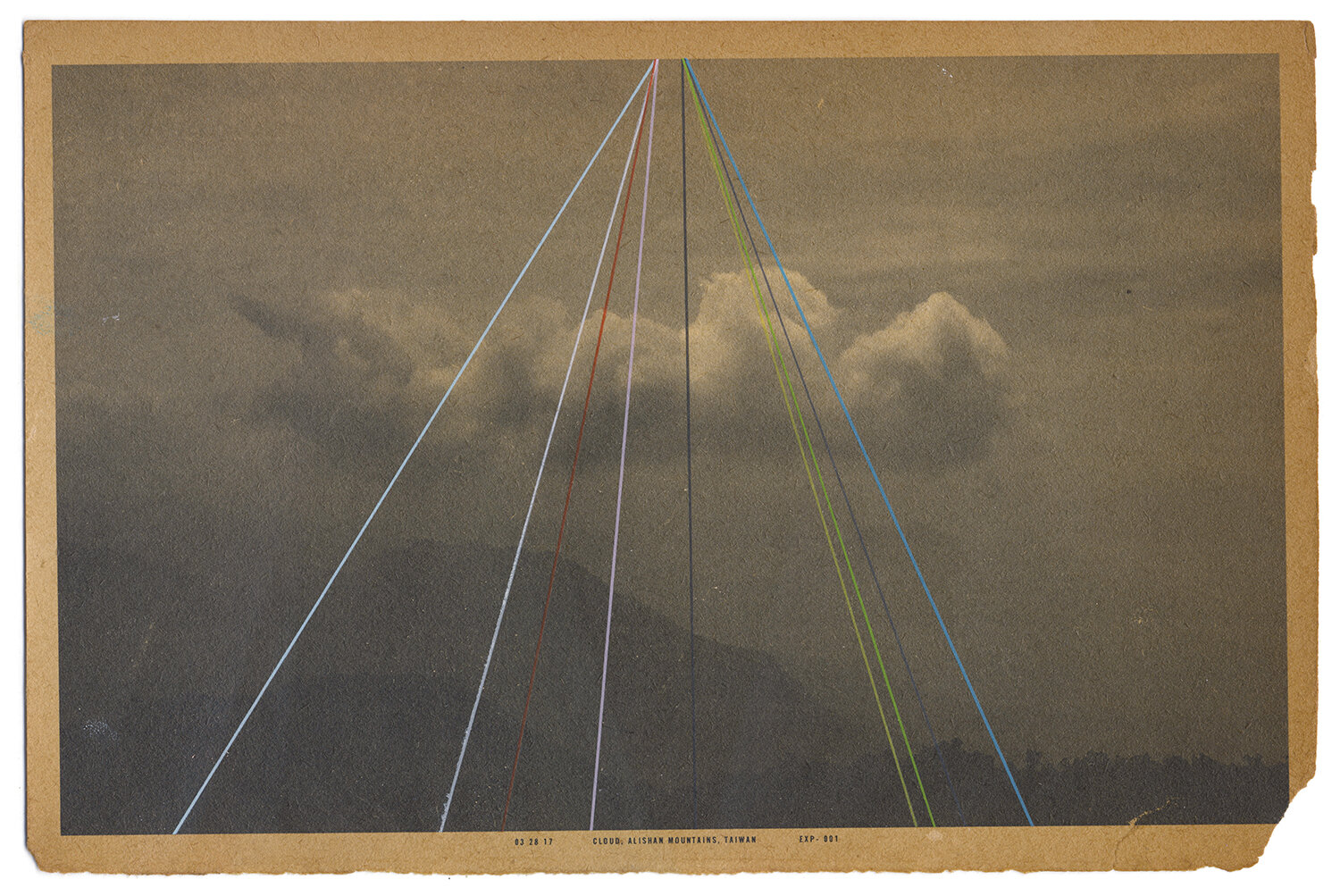FOUR DEGREES: ECO-ANXIETY AND CLIMATE CHANGE (part 2)
Four Degrees: Eco-Anxiety and Climate Change
Presented by Strange Fire Collective & Humble Arts Foundation
Virtual Exhibition
Curated by InHae Yap, Keavy Handley-Byrne, Jon Feinstein, and Roula Seikaly
Meghann Riepenhoff, Ice #41
The Distancing Effect
InHae Yap
When I think of climate change, I remember, always, distinct scenes from elementary school: reading TIME for Kids articles about melting ice caps; diagrams of greenhouse gases rendered in Crayola marker; making REDUCE RECYCLE REUSE posters before running off to recess. There is nothing remotely cheerful about the topic as such memories would suggest, but this bright, candy-colored vision of climate education seems appropriate to the relentless optimism of the early aughts: an age of pre-Trump liberalism in its staunch, unwavering faith in scientific fact.
Today, experts have placed the “point of no return” for climate change as an overall increase in global temperature of 4 degrees Centigrade. This change is expected to occur by 2100, or perhaps as soon as 2060. The uncertainty of this date only feeds into an increased feeling of ill unease and powerlessness within those who witness these unfolding climatic changes. I still dutifully sort my recycling bins and save electricity where possible, but less with the same conviction that my actions will have an immediate positive effect, and more with the dubious hope that they will do “something.”
What is necessary is a reminder: a stimulus that probes us to demand what is right for this planet in the long run, for humans as a whole and the ecosystems we cohabitate. Strange Fire Collective’s contribution to Four Degrees includes work from 40+ contemporary photographers who perceive the broader affective landscape wrought by climate change through abstraction. Beyond polar bears and ice caps, these artists de-familiarize that which is topically and visually familiar in order to refresh the conversation.
“Abstract photography” is an admittedly precarious category, almost an oxymoron, for the image can never fully be released from its referent. In centering the materiality of the photograph, for instance, process-based work becomes a reminder of the toxicity of film processing chemicals and the fact that photo paper cannot be recycled. Elizabeth Woodger explores this tension between creation and destruction as she splashes harmful chemicals onto photosensitive paper; in her work, Ramifications, a wondrous image of the forest canopy is dashed with a dark blotch, blue and black like a bruise, while perfect leaves warp into something resembling a dangerous algae bloom. In Mary Zompetti’s cameraless photographs of two frogs, putric animal remains ooze against silver emulsion and create an eerie flash that speaks to biological brevity. There are indeed ramifications for our work in photography, even when we are tucked away within the quietude of the darkroom.
Traces of climate anxiety seep into other spaces: the ominous red streak conjured by Gary Edward Blum over a horizon of trees in the Sierra Nevada, manipulated to evoke the 19th-century work of such photographers as Ansel Adams and their innocent appreciation of the American West; the longing for space and freedom as Maria Rosario Montero’s black-and-white poster of a landscape slumps into a small bedroom filled with stuffed toys; Yixin Guan’s intervention into digital stock photos, which disrupt their illusion of a perfect, untouched nature with such materials as styrofoam cups, tin foil, and plastic plates. No scene is left untouched.
Others, still, transform images of human-wrought changes to nature, recuperating the legacy of the New Topographics photographers. Where 20th century photographers once documented the pervasive takeover of landscapes by industrial sprawl and human dominance, today we see its cracks: quite literally, in Leah Dyjak’s image of a tarred road, which bursts and transmutes under the pressures of a rebelling earth and the failure of infrastructure projects to contain it. Meghann Riepenhoff places cyanotype papers in natural waters, working alongside the elements to preserve the spontaneous magic of a chemical reaction; she, the artist, is no more in control than natural wind patterns, sediment movement, or water pH and temperature at any given time of day. The fleeting nature of her process leaves us to wonder what such work might have looked like in a pre-industrial past, or many years into the warming future. Meanwhile, Ella Morton’s mordançage images create the impression of skies as rolling veils, which obscure and threaten the structures we humans have so proudly built, like a doomed Tower of Babel.
Strangely enough, these images give me hope: the sheer volume of work that we and the Humble Arts Foundation were honored to have received for this open call speaks to continued commitment and deep thought about environmental issues. It’s easy to be overwhelmed by a sense of complicity in climate change, and perhaps even a reckless desire to see oceans boil. Without the ability to visualize this ruin, these carefully selected abstractions stand in for the terrible beauty of the anthropocene effect. Even those photographers who engage in more directly representational work are not simply documenting climate change. Rather, they think through the camera and the medium of photography to address themes of transience, sustainability, and environmental change in the everyday: climate change is the object, but not the subject, of these images. Some things may only be perceived through a distance.
*
My thanks to Keavy Handley-Byrne, who contributed text and critical insights to this essay – particularly in thinking through what abstraction contributes, visually and conceptually, to environmental photography.
Featured Artists: Catalina Aranguren, Leah Dyjak, Lindsay M. Godin, Lois Bielefeld, Matthew David Crowther, Nathan Rochefort, Nicolo Sertorio, Scott Fortino, Aindreas Scholz, Ana Leal, Bar Faber, Daniela Pafundi, David Ondrik, Elizabeth Stone, Elizabeth Woodger, Ella Morton, Eric Robertson, Gary Edward Blum, Gilberto Gutierrez, Giovanni De Benedetto, Julianna Foster, Kevin Hoth, Maria Rosario Montero, Mary Zompetti, Patricio Saavedra, Patrick Gookin, Samin Ahmadzadeh, Sarah Crofts, Shanna Merola, Yuxin Guan
For the original open call, please see this link.











































